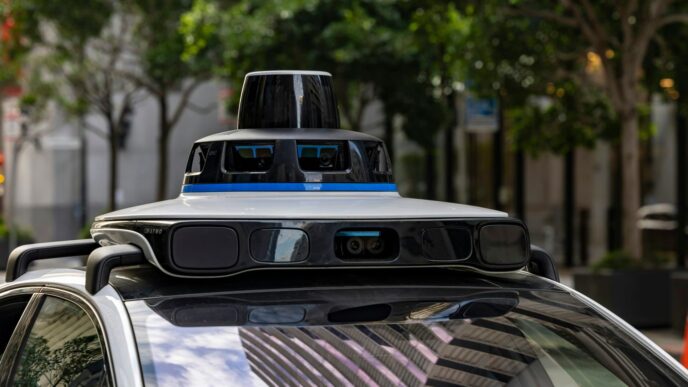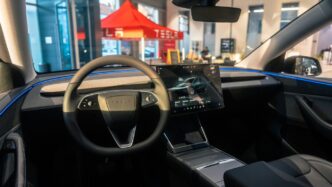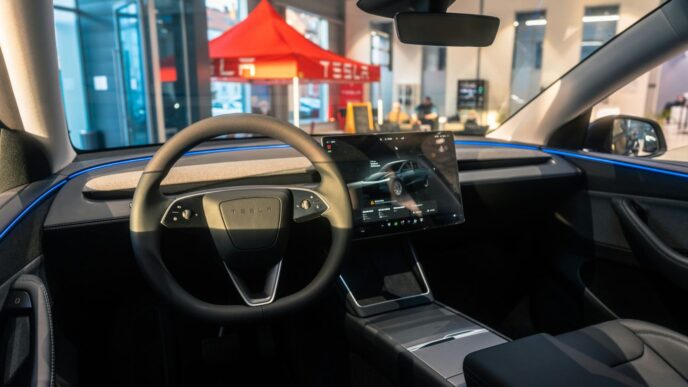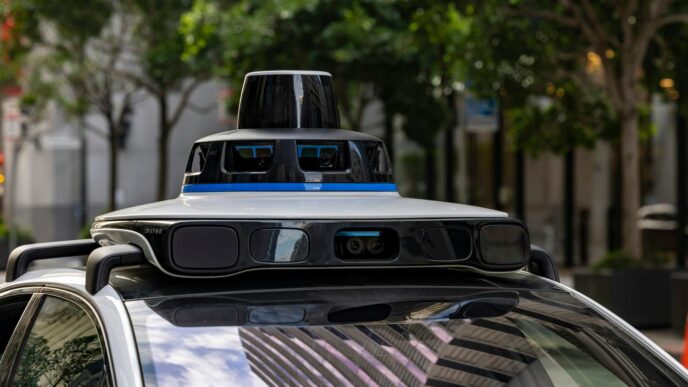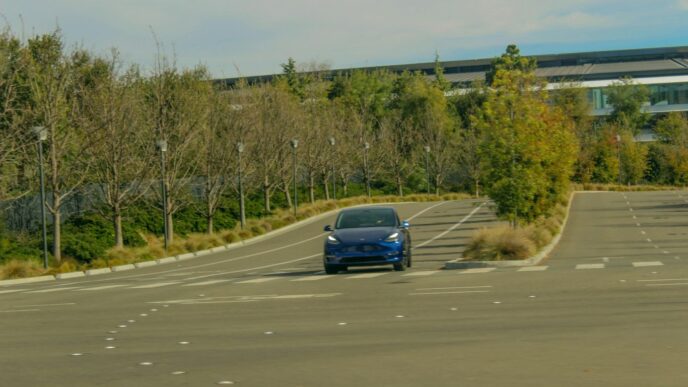Lots of talk lately about Chinese cars coming to America. It’s a big deal, and if you’re curious about what it means, you’ve come to the right place. Getting a car from overseas into the U.S. isn’t as simple as just shipping it. There are rules, costs, and a whole bunch of things to figure out. We’ll break down what you need to know about chinese cars in america before they become a common sight on our roads.
Key Takeaways
- Bringing cars from China to the U.S. involves strict rules from agencies like the EPA, focusing on emission standards. Vehicles might need modifications or certification through special importers.
- The cost goes beyond the car’s price. Expect expenses for shipping, customs processing, registration, insurance, and potentially setting up U.S. market infrastructure.
- Manufacturers can bring cars for research or testing, sometimes allowing employees or influencers to use them, but these vehicles can’t be sold to the public.
- Non-U.S. citizens have specific rules for temporary vehicle imports, often with time limits and restrictions on ownership, making them unsuitable for regular use.
- Chinese automakers face challenges like building brand recognition and establishing dealership and service networks, which requires significant investment.
Navigating Import Regulations for Chinese Cars
Bringing a car from China into the United States isn’t as simple as just shipping it over. There are a bunch of rules and regulations you have to deal with first. The biggest hurdle is making sure the car meets U.S. environmental standards, specifically those set by the Environmental Protection Agency (EPA).
Understanding EPA Emission Standards
The Clean Air Act is pretty strict about this. It basically says you can’t bring any vehicle or engine into the U.S. if it doesn’t meet EPA emission standards. This applies to everything, whether it’s new or used, made here or abroad. If a car doesn’t meet these standards, it’s considered nonconforming. Getting a nonconforming vehicle into the country usually involves one of two main paths.
Certification Through Independent Commercial Importers
One way to get a nonconforming vehicle into the U.S. is to have it modified, tested, and then certified by what’s called an Independent Commercial Importer (ICI). These are companies that specialize in making imported vehicles compliant with U.S. regulations. It’s a bit like getting a special permit, but it requires a lot of paperwork and work to get the vehicle up to snuff.
Temporary Importation Exemptions and Requirements
There are also exemptions for temporary importation, but you need EPA pre-approval for these. The EPA allows nonconforming vehicles to be brought in temporarily under a U.S. Customs and Border Protection bond for specific reasons. These include:
- Testing: For research and development purposes.
- Display: For shows or exhibitions.
- Repair or alteration: If the vehicle needs work done in the U.S.
- Nonresident use: For people who are not U.S. citizens and are visiting temporarily.
- Competition/Racing: For use in specific events.
If you’re thinking about importing a car this way, you absolutely must either arrange for an ICI to certify it or get that EPA pre-approval for an exemption before you ship anything. The U.S. Customs and Border Protection and the EPA can seize vehicles that arrive without the proper paperwork, and you could face fines. It’s a serious process, and getting it wrong can be costly.
The Cost and Complexity of Bringing Chinese Cars to America

So, you’re thinking about getting a car from China? It’s not as simple as just picking one out and having it shipped over. There are some serious costs and complexities involved that you really need to get a handle on before you even start dreaming about cruising down the highway in something new.
Shipping and Logistics Expenses
First off, just getting the car from the factory in China to your driveway in the US is a big deal. We’re talking about shipping costs, which can add up fast. Think about it: a car isn’t exactly a small package. For comparison, shipping a car from Japan to the US can cost anywhere from $1,000 to $2,500, depending on the size of the vehicle. That’s just for the shipping itself. Then you’ve got to factor in all the other bits and pieces that come with international transport. It’s not just the sticker price of the car anymore; it’s a whole logistical puzzle.
Customs, Registration, and Insurance Hurdles
Once the car lands on American soil, the paperwork really begins. You’ll need to deal with U.S. Customs and Border Protection, which involves duties and fees. Then there’s the whole process of getting it registered with your local Department of Motor Vehicles (DMV). This can be tricky because the car needs to meet U.S. standards, especially emissions. Finding an insurance company willing to cover a vehicle that isn’t commonly seen on American roads can also be a challenge, and likely more expensive. These administrative and regulatory steps can significantly inflate the final cost and add considerable time to the process.
Investment in U.S. Market Infrastructure
For Chinese automakers looking to sell cars here, it’s not just about shipping a few vehicles. They need to build a whole support system. This means setting up dealerships, establishing service centers, and making sure there are parts available. Think about how long it took established brands like Volkswagen to even get a small foothold in the U.S. market, and they already had name recognition. For a new brand, the investment in marketing, sales, and after-sales service infrastructure is enormous. It’s a massive undertaking that requires deep pockets and a long-term vision, potentially costing billions of dollars to get right. This is why some companies are exploring temporary importations for research and development, like BYD having models at their Pasadena design center, or Ford bringing in vehicles for benchmarking [af9e].
Manufacturer-Specific Importation Pathways
Bringing cars from China into the U.S. isn’t as simple as just shipping them over. There are specific ways manufacturers can legally import vehicles, and these aren’t for just anyone to use. Think of these as special permits for very particular reasons.
Vehicles for Research and Development
Automakers are allowed to bring in vehicles from other countries for testing and development. This means a Chinese car company could import its own cars to the U.S. to see how they perform in American conditions, or to study the competition. These cars are usually marked with manufacturer plates and can’t be sold to the public. They’re strictly for internal company use, like checking out new tech or seeing how their cars stack up against others already on the road here.
Temporary Use by Employees and Influencers
Sometimes, these research and development vehicles get a bit more visibility. A company might let its employees drive these cars, maybe even to and from work. It’s also possible for influencers or reviewers to get behind the wheel for a short time. This gives people a chance to experience the cars, and the company gets some informal feedback or exposure. It’s a way to get these vehicles seen and driven without actually selling them.
Benchmarking and Competitive Vehicle Acquisition
This is a pretty common practice across the entire auto industry. Car companies regularly buy vehicles from their competitors, both domestic and international, to take apart and analyze. This is called benchmarking. They want to see how other cars are built, what features they offer, and how they perform. So, a Chinese automaker might import a popular American or European car to study, or an American company might import a Chinese car for the same reason. It’s all about understanding the market and improving their own products. This process helps them understand what’s currently available and what consumers might expect.
Temporary Personal Vehicle Importation Rules
So, you’re thinking about bringing your personal car from China to the U.S. for a visit? It’s not quite as simple as just shipping it over. There are some specific rules you need to be aware of, especially if you’re not a U.S. citizen.
Generally, if you’re a non-U.S. citizen, you can bring your car into the country temporarily without needing to get U.S. plates. You’ll get a special certificate for temporary importation to put on your windshield. However, this temporary import usually has a strict time limit, often around 12 months, and you can’t sell the car while it’s here. Keep in mind that shipping times eat into this window, so you might only have a few months of actual use. It’s more for a short visit or test drive than for settling in.
Here’s a quick rundown of some key points:
- Duration Limits: Most temporary imports are capped at 12 months. This period starts from when the vehicle enters the U.S.
- Ownership Restrictions: The vehicle must remain in your name and cannot be transferred to anyone else during its stay.
- Cross-Border Commuting: If you live near the border, say in Mexico, and commute into the U.S., you might see Chinese EVs with their original plates. This is part of a specific arrangement, but it doesn’t apply to everyone.
It’s a bit of a complex process, and you’ll want to coordinate your arrival and your vehicle’s arrival to make sure you meet all the requirements for temporary duty-free entry. It’s always a good idea to check the latest regulations before you make any plans, as these rules can change. You can find more detailed information on importing vehicles through official government resources.
Addressing the Challenges of Market Entry
So, you’ve heard about Chinese cars potentially hitting American roads. It sounds exciting, right? But getting them here and actually selling them is a whole different story. Think of it like trying to get a new recipe to become a family favorite – it takes more than just a good idea.
Overcoming Brand Recognition Gaps
Right now, most Americans probably can’t name a single Chinese car brand, let alone know anything about them. It’s like showing up to a party where everyone knows each other, and you’re the new face. Building trust and familiarity takes time and a lot of effort. Automakers will need to invest heavily in marketing, maybe even sponsoring popular events or partnering with well-known figures. It’s not just about showing off the cars; it’s about telling a story and creating a connection with potential buyers. Think about how long it took brands like Toyota or Honda to become household names here. It didn’t happen overnight.
Establishing Dealerships and Service Networks
Cars need to be sold, serviced, and repaired. That means setting up a physical presence across the country. This isn’t just about finding a building; it’s about finding people who know how to work on these specific vehicles, stocking the right parts, and making sure customers have a good experience when something goes wrong. Imagine buying a car and then finding out there’s no one within 100 miles who can change the oil or fix a flat. That’s a deal-breaker for most people. Companies will likely need to partner with existing repair shops or build their own network from scratch, which is a massive undertaking.
Securing Financing and Insurance Options
Buying a car is usually a big purchase, and most people need loans or financing to do it. Car companies need to work with banks and financial institutions to offer competitive loan rates. Similarly, insurance companies need to be willing to insure these new vehicles. If insurance is too expensive or hard to get, that’s another big hurdle for buyers. It’s a bit of a chicken-and-egg situation: dealers need financing and insurance to sell cars, and banks and insurers need to see a market and understand the risk before they can offer those services.
Potential Impact on the American Automotive Landscape

So, what happens when Chinese car companies actually decide to make a serious play for the American market? It’s not just about getting the cars here, which we’ve talked about being a whole headache. It’s about what happens once they’re on our roads.
First off, expect some serious competition. Established brands like Ford, GM, and Toyota have been around forever, and they’ve got a loyal following. But Chinese automakers, often backed by their government, have the deep pockets to really push their products. Think about Volkswagen; they’ve been trying to grab a bigger slice of the US pie for years and still only have a small share. It’s a tough market, and even big global players struggle. Chinese brands might have to spend a ton of money just to get noticed, let alone compete.
But here’s the flip side: more choices for us, the consumers. If Chinese cars start showing up in numbers, we could see a wider range of vehicles, maybe with some cool new tech that we haven’t seen before. Plus, competition usually means better prices. It’s possible that the pressure from new players could push American car companies to innovate faster and maybe even lower their prices to keep customers.
There are also the bigger picture things to consider. How will this affect American jobs? What about trade relations between the US and China? These aren’t just car sales; they can get tangled up in international politics and economics. It’s a complex situation with a lot of moving parts, and it’s going to be interesting to see how it all shakes out.
Here’s a quick look at what could change:
- Increased Market Competition: Expect established automakers to feel the heat.
- New Technology Introduction: Consumers might get access to innovative features sooner.
- Price Adjustments: Competition could lead to more affordable options for buyers.
- Supply Chain Shifts: Manufacturing and parts sourcing might see changes.
- Geopolitical Considerations: Trade policies and international relations will play a role.
So, Are Chinese Cars Coming to America?
It’s clear that getting Chinese cars onto American roads isn’t as simple as just shipping them over. There are a lot of rules and hurdles to jump through, from EPA standards to customs paperwork. While some companies are finding ways to test their vehicles here, and enthusiasts can even bring cars over temporarily, the path to mass market sales for the average buyer is still pretty blocked. It’s going to take a lot of time, money, and effort for Chinese automakers to build the infrastructure needed, like dealerships and service centers, if they want to compete here. So, while the idea of Chinese cars in the US is exciting, don’t expect to see them in every driveway just yet. It’s a complex situation with many factors at play, and the landscape could change, but for now, it’s a waiting game.
Frequently Asked Questions
What are the main rules for bringing a Chinese car into the U.S.?
Bringing a car from China to the U.S. involves a lot of steps. You need to make sure it meets U.S. pollution rules, which are set by the EPA. Sometimes, special companies called Independent Commercial Importers (ICIs) can help modify and test cars to meet these rules. You might also be able to bring a car temporarily if it’s for specific reasons like research or testing, but there are strict rules about how long it can stay and who can use it.
How much does it cost to import a Chinese car?
It can be quite expensive! Besides the price of the car, you’ll have to pay for shipping, which can cost thousands of dollars. Then there are fees for customs, getting it registered, and finding insurance for a car that isn’t common in the U.S. It’s a big investment just to get the car here and legally on the road.
Are there special ways car companies can bring their cars from China?
Car companies can bring their own cars for things like testing or showing them off. They use special plates and can’t sell these cars to regular people. Sometimes, employees or even social media influencers might get to drive these cars. For example, some Chinese car brands have cars at their U.S. offices that employees drive.
Can I bring my own Chinese car to the U.S. temporarily?
Yes, but with limits. Non-U.S. citizens can sometimes bring their foreign cars for a short time, usually up to a year, without getting U.S. plates. However, the car can’t be sold during that time. Also, China has its own rules about letting cars leave the country, which can shorten the time the car can actually stay in the U.S., making it more for short trips than everyday driving.
What are the biggest hurdles for Chinese car companies entering the U.S. market?
Building a name for themselves is a big challenge. Chinese car brands aren’t well-known in America yet. They also need to set up places to sell cars (dealerships) and fix them (service centers). Getting loans for buyers and finding insurance companies willing to cover these cars are also important steps they need to figure out.
How might Chinese cars change the U.S. car market?
Chinese cars could make the market more competitive, maybe leading to lower prices or new technology for consumers. Established brands might feel pressure to improve. It could also bring new types of vehicles and features to the U.S. However, there are also government and political factors that could affect whether these cars are allowed to be sold widely.




